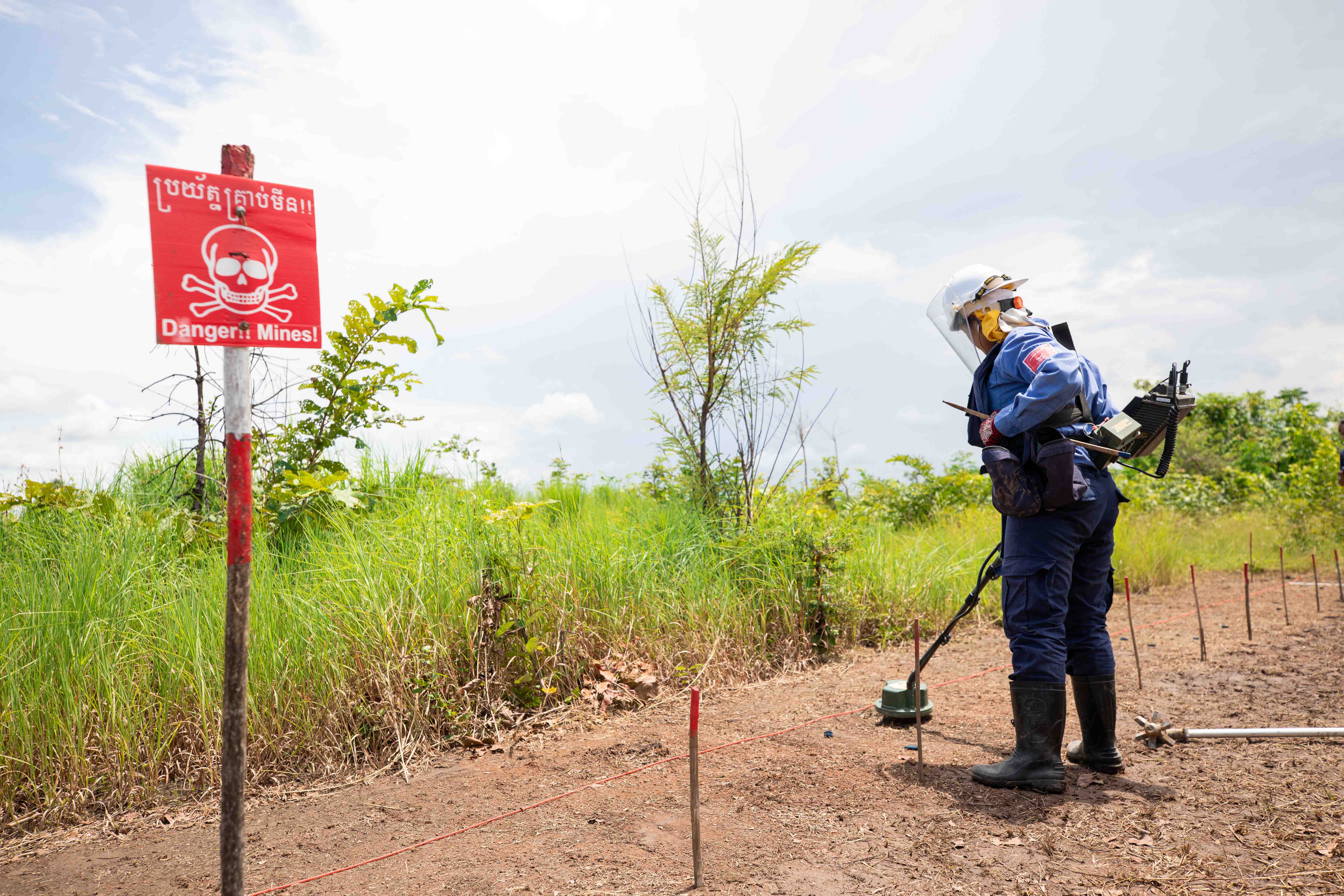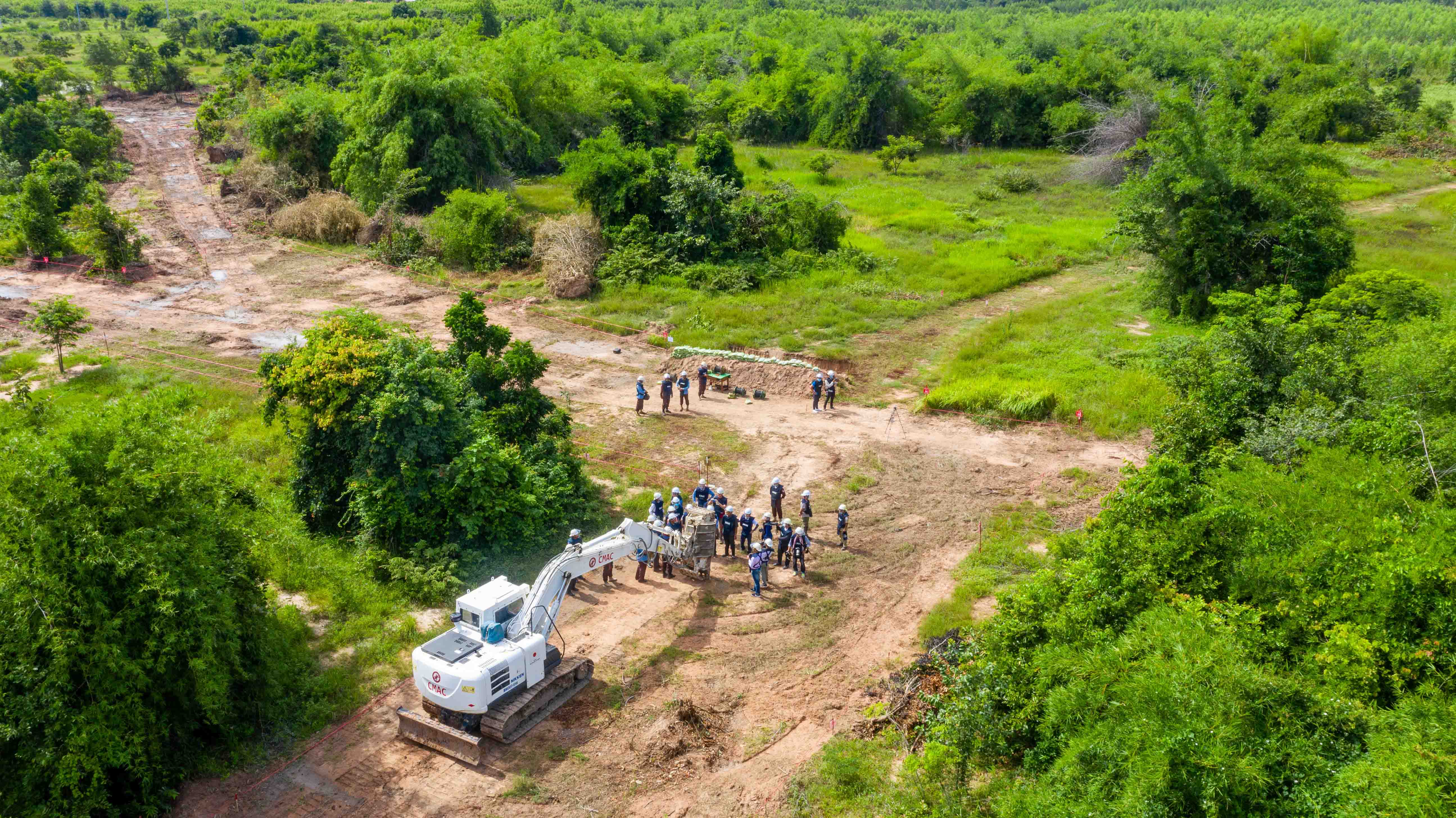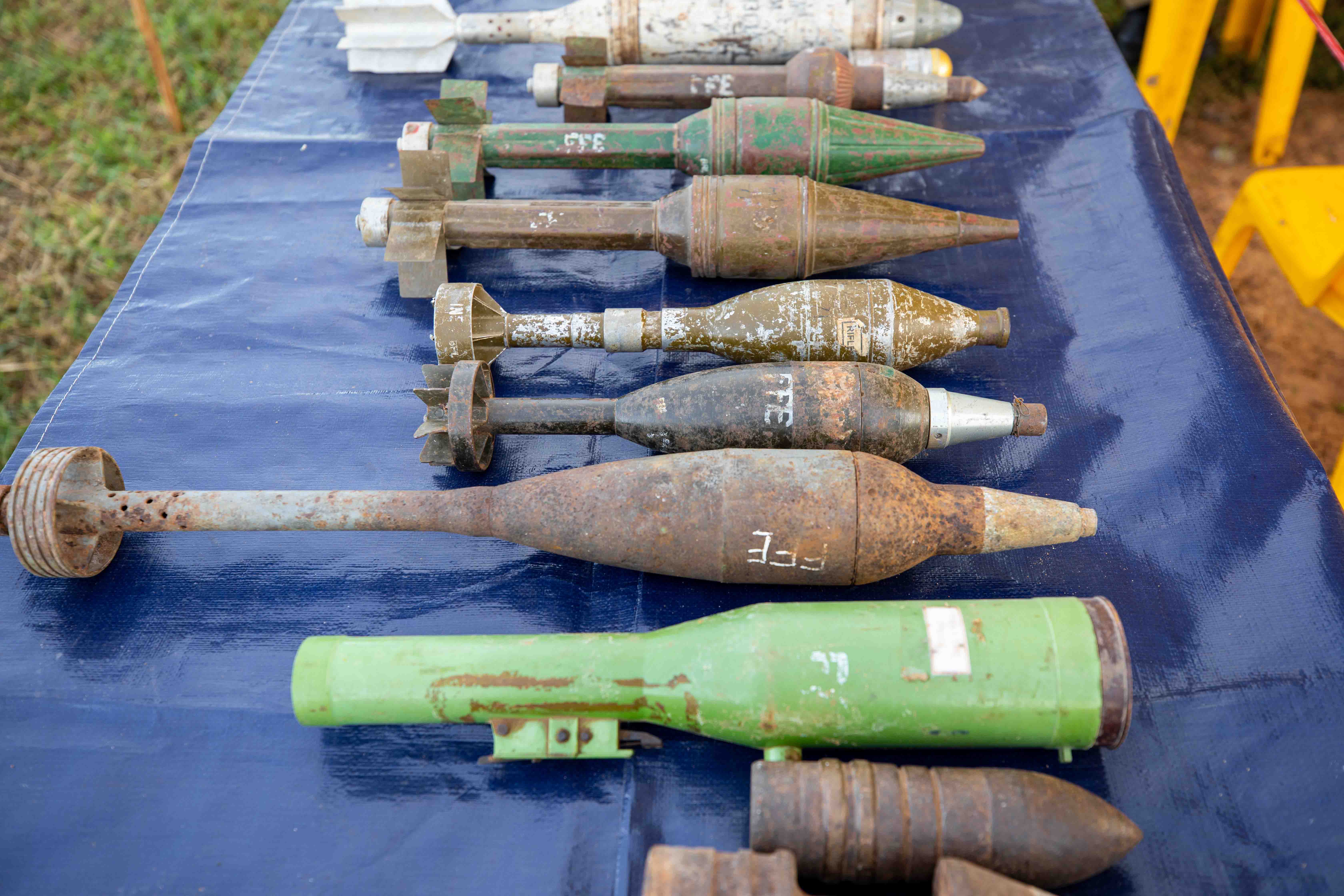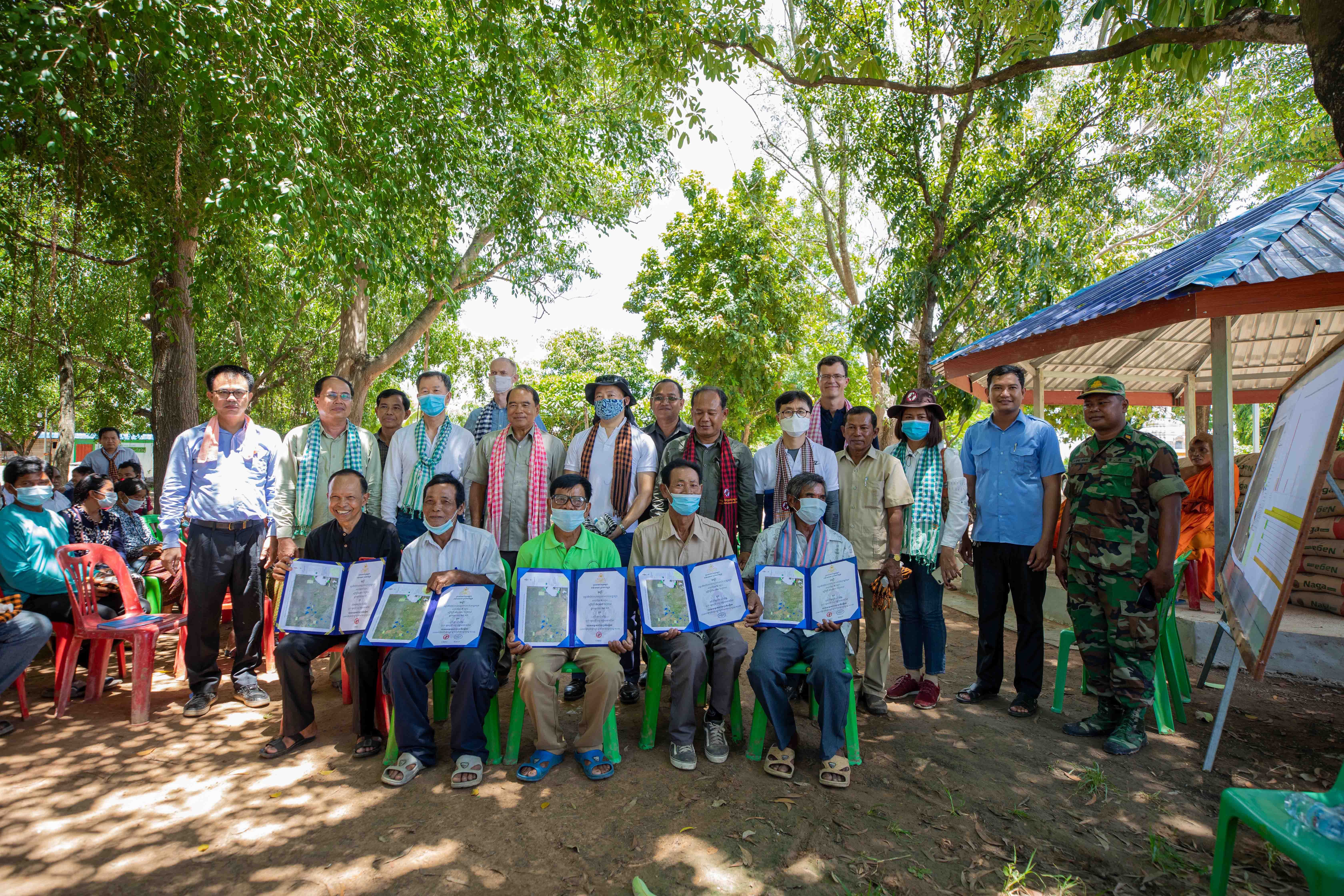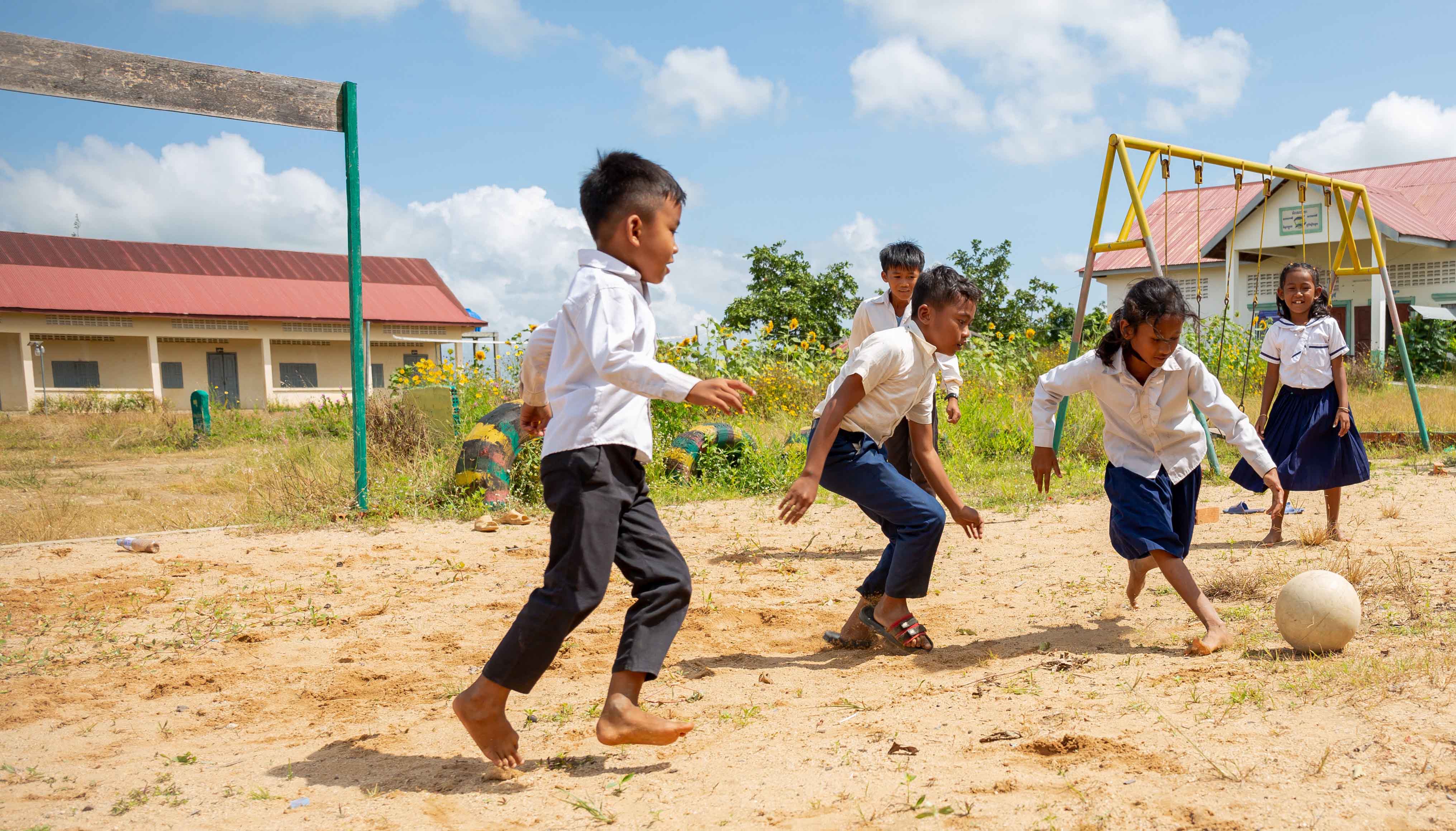Clearing For Result Phase IV-Mine Action For Human Development
Background
Cambodia's landmine contamination is the result of a protracted sequence of internal and regional conflicts that affected the country from the mid-1960s until the end of 1998. The nature of mine and ERW contamination in Cambodia is highly complex due to the various conflicts and a lack of records on where landmines were laid. However, generally speaking, the north-western region bordering Thailand has some of the highest global concentrations of anti-personnel mines, believed to have been planted during the Khmer Rouge era in the 1970s and the civil war that ended in 1998. In addition, air-to-ground explosive remnants of war (ERW) are also found in the eastern provinces bordering Vietnam, believed to be remnants from the Indochina war and the Vietnam war. Throughout Cambodia, almost 65,000 human casualties, including nearly 20,000 deaths, can be attributed to mines and ERW since 1979.
Humanitarian mine action in Cambodia started in 1992. To ensure proper management, effectiveness, and efficiency of the mine action sector, the Royal Government of Cambodia (RGC) established the Cambodian Mine Action and Victim Assistance Authority (CMAA) by Royal Decree in 2000. The CMAA is mandated to coordinate, monitor, and regulate demining and ERW clearance activities and assistance to mine/ERW victims. As of June 2021, Cambodia’s mine action sector had collectively cleared and released 2,221 km2 of contaminated land, destroyed 1,103,192 anti-personnel mines, 25,603 anti-tank mines, and 2,909,764 ERW, including cluster munitions, that benefited 7,196,965 people. The CMAA estimates that Cambodia still has 2,098 km2 of contaminated land of which 806 km2 is contaminated by landmines.
Nationally implemented through the CMAA, the Clearing for Results (CfR) project has been supporting the RGC’s mine action efforts since 2006. Over the past 15 years to June 2021, the project has cleared and released 263 km2 of land back to the community, on which 71,311 anti-personnel mines, 1,512 anti-tank mines, and 214,045 items of explosive remnants of war were found and destroyed, benefiting over one million people, of which half are women. Clearing for Results, Phase IV (CfRIV: 2020-2025), financially funded by Australia, New Zealand, Republic of Korea, UNDP, and a 10 percent in-cash contribution from the RGC, has been designed to support the transition of a humanitarian-driven mine action sector to one that utilizes the results of mine action to support targeted action for poverty reduction and human development in Battambang, Pailin, and Banteay Meanchey provinces.
Key Expected Outputs
The project aims to support mine/ERW clearance and land release, create pathways for accelerated development in villages that have been declared mine-free, and strengthen the national regulation and coordination capacity in the demining sector for sustainable residual threat management. The project will contribute to the following outputs:
- Output 1: The prioritized mine-impacted villages in the provinces of Battambang, Banteay Meanchey and Pailin are declared mine-free
- Output 2: Humanitarian mine-action and development activities aligned to national and sub-national sectorial policies and planning strategies
- Output 3: Strengthened mine action sector management and national capacities that address residual threats
Main Activities
- Clearance/land release through clearance contracting
- Land reclamation non-technical survey and baseline survey through survey contracting
- Support CMAA Quality Management Teams (QMTs) to ensure released land adheres to CMAA standards.
- Support to Provincial Mine Action Centres (PMACs) and Mine Action Planning Units (MAPUs) to develop a strategy to promote sustainable, inclusive development in ‘mine-free’ villages.
- Support to victim assistance activities
- Support to mine-risk education (MRE) activities
- Mainstreaming gender sensitivity in mine action
- Improving data collection, analysis, and dissemination through support to the CMAA Database Management Unit (DBU) and Socio-Economic and Planning Department (SEPD)
- Support selected capacity development activities, based on the results of the CMAA Capacity Development Needs Assessment and Capacity Development Plan.
- Develop a comprehensive residual threats strategy
- Support CMAA compliance with and reporting commitments to international treaties
- Conduct mid-term review of National Mine Action Strategy (NMAS) 2018-2025
Progress / Achievement to date
- From April 2020 to June 2021, 18.46 km2 (11.42km2 in 2020 and 7.04km2 as of June 2021) of contaminated land was cleared and released back to the community for productive use. On the cleared land, 1,667 Anti-Personnel Mines, 16 Anti-Tank Mines, 1,702 items of ERW were found and destroyed, benefiting13,260 households or 56,026 individuals.
- In 2021, 531 minefields have been identified for survey under Land Reclamation Non-Technical Survey (LR-NTS). From April to June 2021, 67 minefields were visited (equal to 112% of the period target 67/60)) with the release of 1.58km2 of minefield land through NTS.
- CMAA Quality Management Teams (QMTs) have completed 1,805 Quality Assurance (QA) and 226 Quality Control (QC) inspections between April 2020 and June 2021 to ensure that mine action operations are conducted safely, effectively, and efficiently. Of the QA inspections, 8.75% (158 minefields) of sites had minor non-compliance, while 0.17% (3 minefields) had major non-compliance issues identified, with the majority of issues resolved during the QMTs visit. Of the QC inspections, no failures were identified.
- In 2021, the project scaled up Victim Assistance activities with national counterparts - Trauma Care Foundation (TCF), People with Disability Foundation (PWDF), and Cambodian Disabled People’s Organization (CDPO) - across the four pillars of 1) immediate emergency response and medical treatment, 2) improved physical rehabilitation services, 3) socio-economic inclusion, and 4) MRE.
- The project, together with the CMAA Victim Assistance department, supports the Quality of Life Survey (QLS). As of June 2021, 25 new volunteers have been trained to conduct the 2021 QLS data collection, provide peer to peer counselling to landmine/ERW survivors, support outreach activities of the physical rehabilitation services, and provide advice on the protection and promotion of rights of persons with disabilities in the coming period.
- The project is supporting community based MRE activities to enhance the awareness of landmine/ ERWs and reinforce MRE messages in local communities, including contextualized training to teachers and police in high-risk areas, landmine/ERWs awareness campaigns, and distribution of MRE materials in the three target provinces.
- The project supported CMAA to develop the Gender Mainstreaming in Mine Action Plan (GMAP) 2021-2025, with ongoing support to gender mainstreaming activities across the tiers of institutional, operational, and beneficiary activities, such as planning and prioritization guidelines, data collection, monitoring and evolution, case studies, and outreach activities.
- In consultation with CMAA and MAPUs, the project developed a ‘Village Meeting to Prioritize Minefields for Clearance (coordinated by Village Chief)’ guideline to promote the inclusion and participation of women and marginalized populations in the minefield planning and prioritization process at the village level.
- The project piloted the CMAA Performance Monitoring System (PMS) in 2019-2020 to collect and report on mine action socio-economic output and outcome data. Based on the data collected, the project produced two (2) PMS reports in 2020 and plan to produce three (3) PMS reports in 2021 to enhance understanding of the needs of communities in affected areas and to inform local economic and development planning.
- Knowledge management and practice sharing has been developed through various articles, including War ends for children when the last land mine is cleared, a joint Op-Ed between KOICA and UNDP, and Victim Assistance in Cambodia: Development for Dignity and Equality in Society, published in the ARMAC Magazine, and the publication of two briefing papers on [1] Cambodia’s planning and prioritization process, and [2] land release methodologies.
- The project facilitated the official launch of Cambodia’s first Safe Ground on 22 January 2021 at Stoeng Toch Krom primary school in Battambang province, one of the most densely mine contaminated regions in the country. With global support from UNMAS, the event was attended by the United Nations Global Advocate for the Elimination of Mines and Explosive Hazards and acclaimed actor, Mr Daniel Craig, together with CMAA, UNDPs Assistant Secretary General and Director for the Crisis Bureau, the United Nations Resident Coordinator for Cambodia, UNICEF Cambodia, UNDP Cambodia, CfRIV donor partners and the broader international community.
Photo: Kimheang Tuon/UNDP Cambodia
Photo: Manuth Buth/UNDP Cambodia
Photo: Manuth Buth/UNDP Cambodia
Photo: Manuth Buth/UNDP Cambodia
Photo: Manuth Buth/UNDP Cambodia
Photo: Manuth Buth/UNDP Cambodia
Photo: Kimheang Tuon/UNDP Cambodia
SAFE GROUND CAMPAIGN
Offical Launched Cambodia’s First Safe Ground
Official Launch of Cambodia's First Safe Ground (Full)
Official Launch of Cambodia's First Safe Ground (Summary)
Kimhong's Story in Battambang | Cambodia's First Safe Ground

 Locations
Locations

